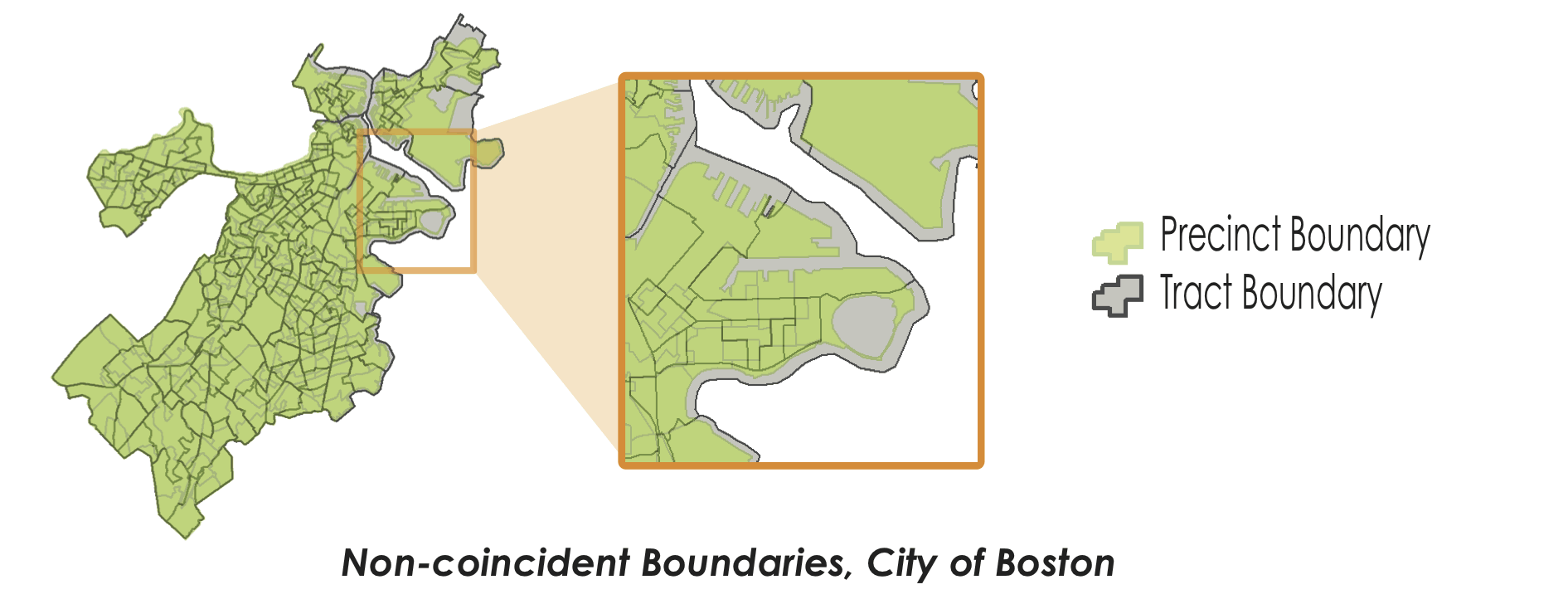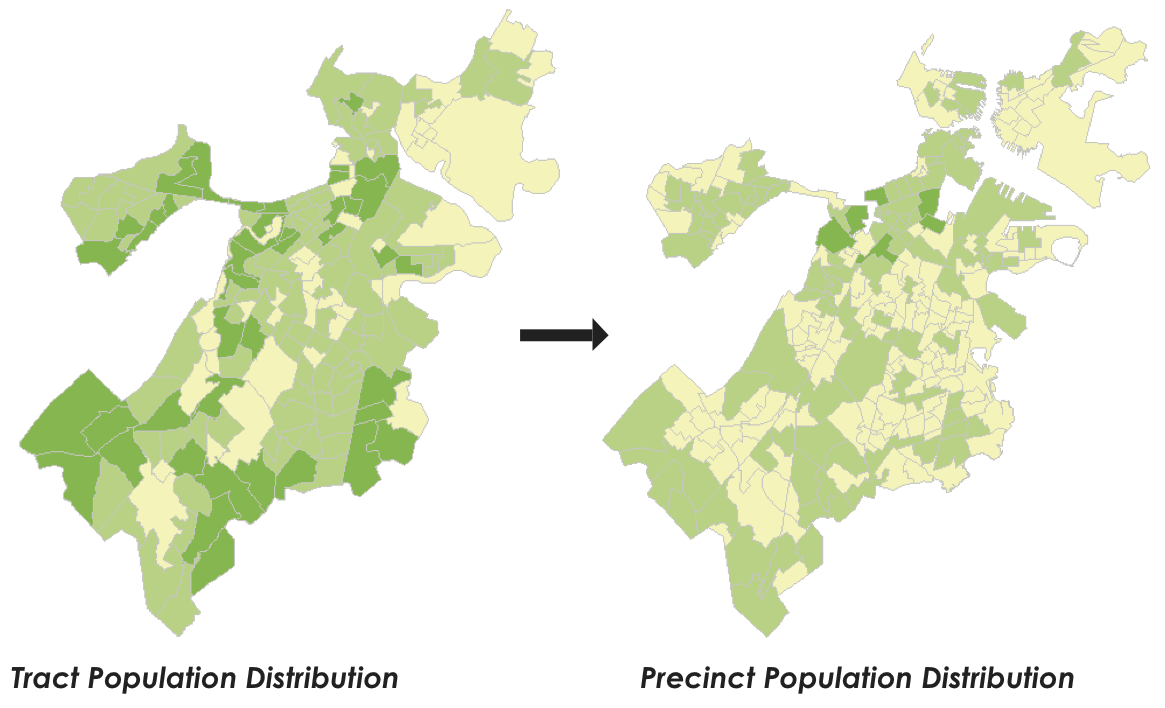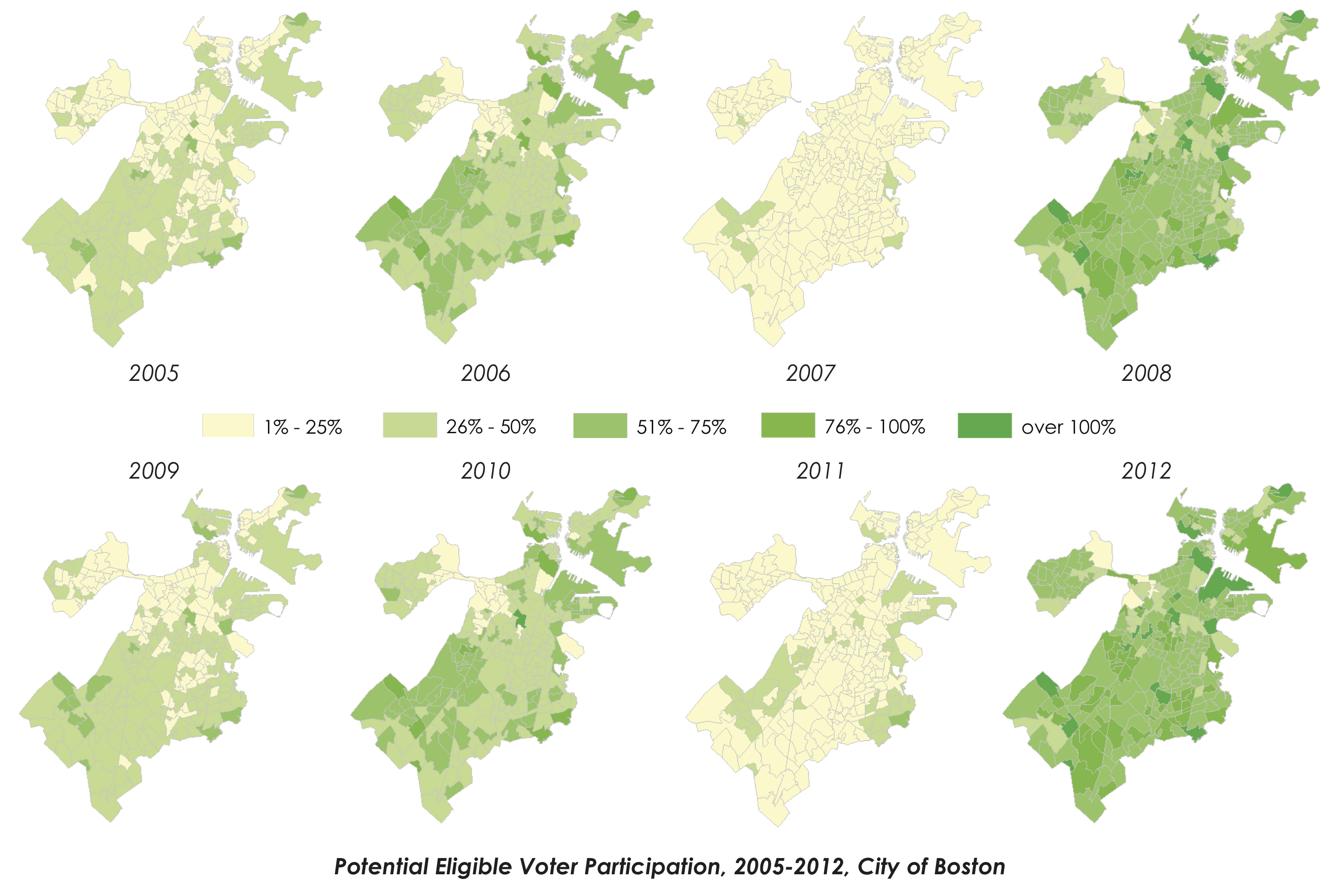
Zhenyang Hua, Marcos Luna | Department of Geography, Salem State University








Precinct -- 418,699
The difference between tract and precinct population is 0.23%, which is caused when we apply the proxy to the tract population by rounding up the decimal points in population data.



the difference in participation between precincts

A cadastral-based dasymetric mapping method is demonstrated to estimate the potential eligible voter participation at the precinct level in the City of Boston. Parcel property polygons, which provide information on available living area for residential buildings, are used as the medium for disaggregation of American Community Survey data and reaggregation to the voting precinct level. Validation measures show that this process produces low overall rates of error. Differences between the re-aggregated data and original Census data are approximately 0.23% and the pattern of errors or differences is random, showing no spatial bias. An analysis of re-aggregated eligible voter participation in Boston precincts for the period 2005 to 2012 shows a recurring cycle in overall citywide participation and in the relative differences in eligible voter participation between precincts.
This method can also be used to re-aggregate population to almost any kind of boundary to support different sections’ requirement to population precision, such as flood zone population for insurance companies. The result of this research can also be used for supporting election campaigns to allocate their campaign resources to the highest voter participation districts.

Marcos Luna | mluna@salemstate.edu